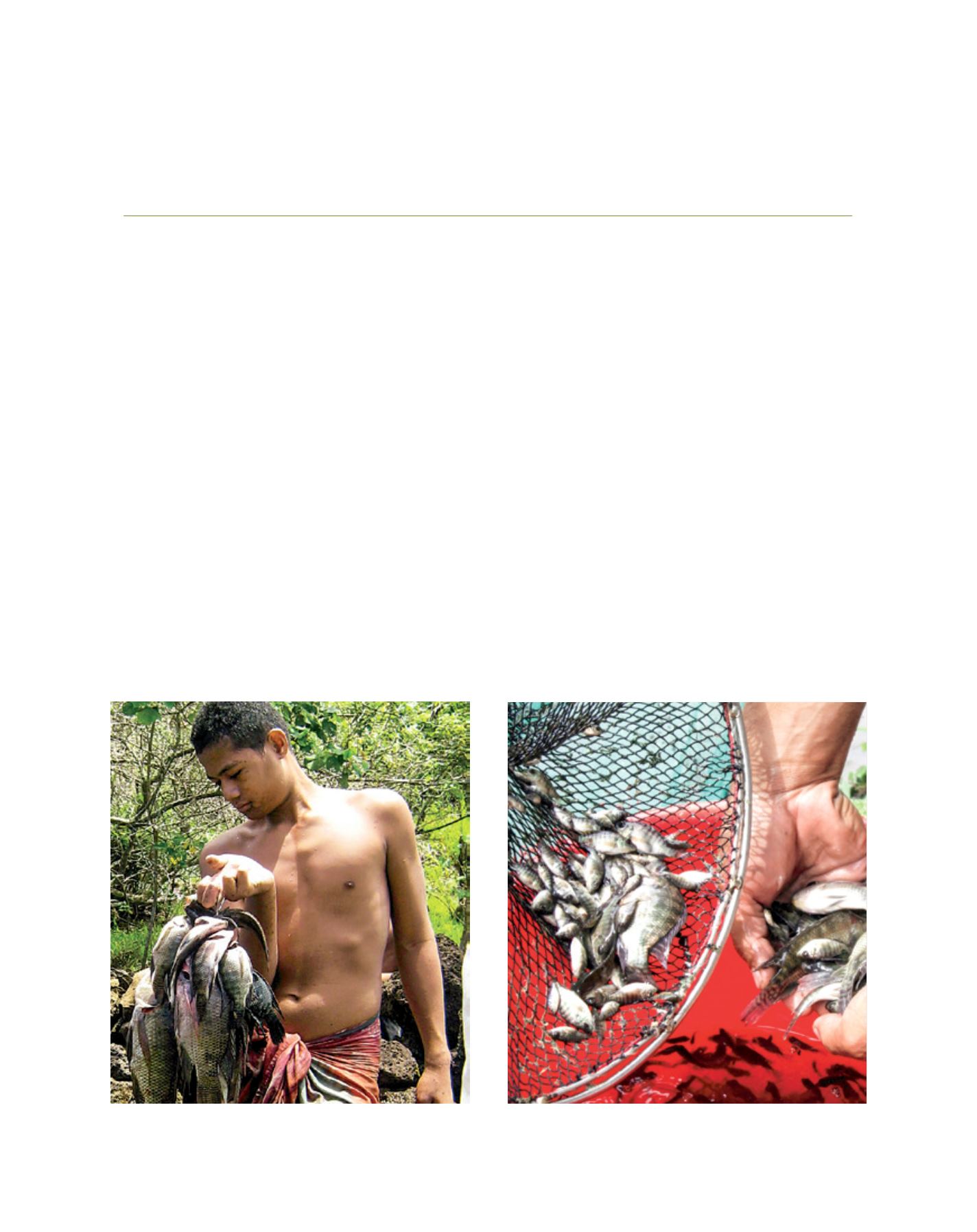

[
] 57
Community-based aquaculture to sustain food
security and livelihoods in the Pacific region
Moses Amos, Director, Fisheries, Aquaculture and Marine Ecosystems Division, Secretariat of the Pacific Community
D
emand for fish by increasing populations in the
Pacific Islands is projected to outstrip the ability of
several island nations’ coastal fisheries to supply
them. The need to strengthen coastal fisheries manage-
ment systems to maintain fish supply is important, but
this may not be sufficient. Therefore, the ability to provide
additional production from aquaculture is essential
to meet anticipated fish supply shortfalls. In address-
ing this issue, the Secretariat of the Pacific Community
(SPC) recognizes the important contribution of commu-
nities through aquaculture by bringing into perspective
a community-based aquaculture approach to address a
shortfall in the supply of fish for food and sustain the
well-being of rural communities.
While aquaculture in general is not a tradition in some
Pacific Island nations, there have been records of integrated
aquaculture and agriculture practices in other Pacific Island
countries, such as integrated freshwater prawn farming of
the species
Macrobrachium lar
in some island communities
in Vanuatu. There is a good record of community-based
aquaculture farming all over the Pacific region today,
where it is a family affair and both women and children
are involved.
In addressing community-based aquaculture in the Pacific
region, the key constraints of capacity, feed and seed supply
are challenging, particularly in remote coastal and inland
communities. To date, it has been difficult to quantify the
number of people fully engaged in a community farm per
day, whether it is full-time or part-time employment, what
the roles of women and children are in a community farm
and how economies of scale can be enhanced to improve
aquaculture, hopefully bringing it to another level. The
key factor remains that community-type aquaculture has to
be formulated around the way of life of the village people
who most need that support. That way of life needs to be
recognized and understood in terms of various agricultural
practices such as subsistence farming and fishing.
Demand for fish in the Pacific Islands will soon outstrip the ability of coastal
fisheries to supply them
Additional fish production from aquaculture is essential to meet anticipated
shortfalls in fish supply
Image: FAME, SPC
Image: FAME, SPC
D
eep
R
oots
















